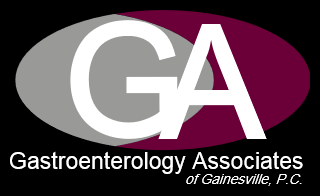ENDOSCOPIC RETROGRADE CHOLANGIOPANCREATOGRAPHY (ERCP)
ERCP is a specialized technique primarily performed to study the ducts of the gallbladder, pancreas, and liver. This procedure combines the use of X-rays and endoscope which allows the physician to view the inside of the stomach, duodenum, and ducts in the biliary tree and pancreas. ERCP is used to check for gallstones, blockage of bile duct, diseases of the liver, and pancreases.
ESOPHAGEAL CANCER
The condition in which a malignancy develops in the tissue of the tube along which food and liquid travel from the throat to the stomach (esophagus).
ENDOSCOPIC ULTRASOUND (EUS)
A procedure that uses high frequency sound waves to produce detailed images of the gastrointestinal area. EUS combined with biopsy allows the physician to analyze fluid and tissue from your abdomen and chest for diagnosis of cyst, pancreatic cancer, and other conditions of the pancreatic region.
FATTY LIVER
The collection of excessive amounts of fats inside the liver. Sometimes leading to cirrhosis.
GASTRITIS
The condition in which the lining of the stomach becomes inflamed. Can be caused by Helicobacter Pylori infection.
ESOPHAGEAL MANOMETRY
Is a procedure used to determine whether the esophagus is working properly by measuring the rhythmic muscle contractions(pressures) generated by the esophageal muscles and the sphincter. During the procedure a thin flexible pressure sensitive tube is passed through the nose, down the back of the throat and into the esophagus. Once in the esophagus, the tube will measure the pressures generated by the esophageal muscle when the muscle is at rest and during swallows. This test is used primarily to evaluate the function of sphincter and muscles when there is a presence of reflux, dysphagia or chest pain.
ESOPHAGOGASTRODUODENOSCOPY (EGD)
A endoscopic procedure in which the upper digestive tract (esophagus, stomach, and first part of the small intestine) is visualized. It is performed for diagnostic purposes to confirm certain conditions and biopsy areas of concern. Typical reason for an EGD include: abdominal or chest pain, nauseas and vomiting, heartburn, bleeding, swallowing problems, and abnormal growths.
FLEXIBLE SIGMOIDOSCOPY
Is a procedure used to visually exam the sigmoid colon. A scope is inserted through the anus and advances approximately two feet into the sigmoid colon, allowing the physician to visualize and capture images of any areas for concern. A Sigmoidosocpy is used to diagnosis the cause of certain symptoms such as rectal bleeding, diarrhea, pain, and cancer detection.
HEMORRHOID BANDING
A procedure using a small rubber band that is placed at the base of the swollen vein, to cut off blood supply. After a series of 3 to 5 bandings, the tissue should shrink the vein and fall off along with the rubber band. This will take place during a routine trip to the restroom. The procedure can be performed in an office setting.
GASTROESOPHAGEL REFLUX DISEASE (GERD)
A condition in which damage to the lining of the lower esophagus has occurred, due to prolonged exposure to stomach acid.
